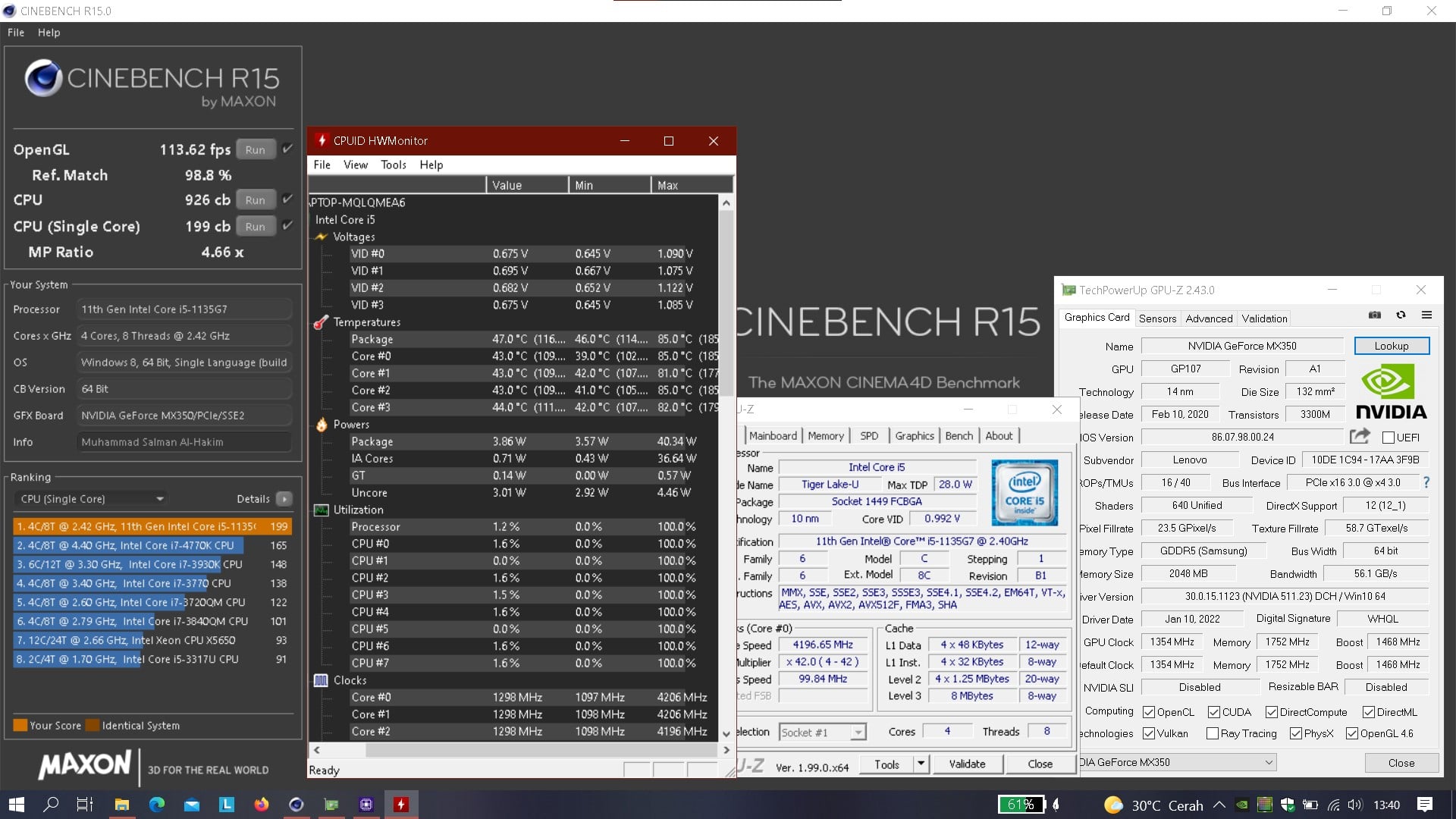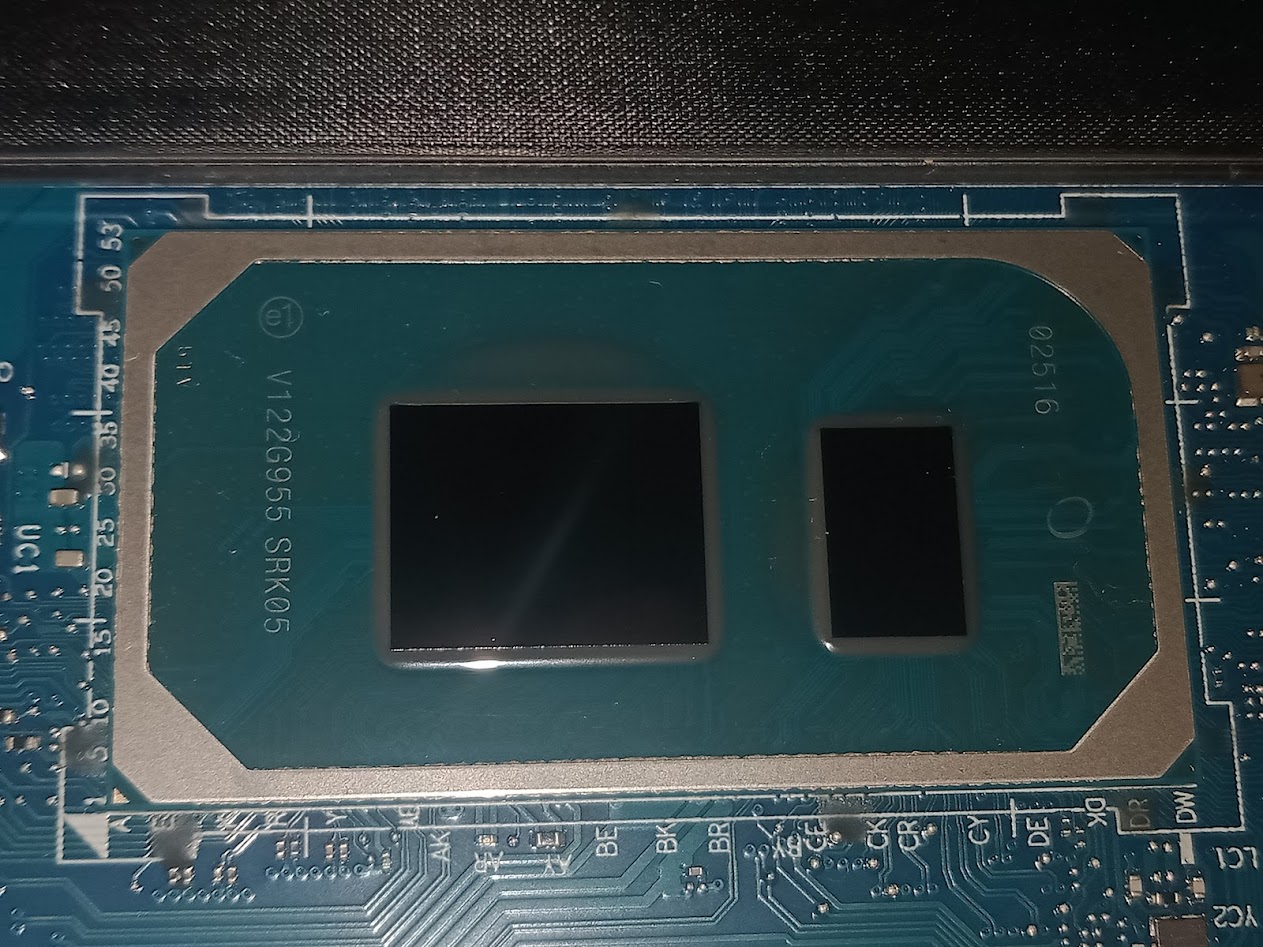Cinebench - R15 Single Core score 199 cb with a i5-1135G7
Thursday, 01 January 1970 07:00 | Update at null
Media Gallery
Screenshot

Device, Setup, etc



URL
https://bit.ly/3yLBb2WInformation Detail
Hardware: Intel Core i5 1135G7
Specs:CPUID : 11th Gen Intel(R) Core(TM) i5-1135G7 @ 2.40GHz
Architecture : x86
Codename : Tiger Lake-U
L3 Cache : 8MB
Clock : 2.40GHz - 4.20GHz
Core/Thread : 4/8
TDP : 28W
Technology : 10nm
Socket : FCBGA1449
IGPU : Intel Iris Xe Graphics Mobile G7
See more specification...
Software: Cinebench - R15 Single Core
Score: 199 cb
About: Cinebench - R15 Single CoreCinebench R15 Single Core is a testing version of the popular Cinebench R15 benchmark, specifically designed to measure the single-core (single-thread) performance of a processor. This benchmark was developed by Maxon, the company behind the professional 3D software CINEMA 4D, and has become one of the industry standards for testing processor performance in various rendering scenarios.
Unlike multi-core testing, which utilizes all CPU cores, single-core testing uses only one processor core to render the same 3D scene as the multi-core version. This provides a realistic picture of a CPU's ability to handle light to medium workloads, which are still common in everyday applications such as web browsing, document processing, older games, or applications that are not yet optimized for multi-threading.
Cinebench R15 Single Core scores are measured in “points” (pts), where higher values indicate that the processor can complete tasks faster with a single core. This score is crucial because while many modern processors offer multiple cores, per-core performance remains the primary indicator in many real-world scenarios. This test is also highly useful for users seeking to assess CPU architecture efficiency, IPC (Instructions Per Clock), and single-core boost capabilities.
Cinebench R15 Single Core is frequently used by reviewers, overclockers, and professional users to compare performance across generations or between CPU brands. Although Cinebench has released newer versions such as R20 and R23, R15 remains relevant due to its lightweight nature and continued use as a benchmark for basic system performance testing.
The Intel Core i5-1135G7 is a quad-core mobile processor introduced in late 2020 as part of Intel’s 11th generation Tiger Lake lineup. Designed for thin and light laptops, this CPU delivers a strong balance of performance, power efficiency, and modern features, making it a popular choice for both casual users and professionals. Featuring 4 cores and 8 threads through Hyper-Threading Technology, it operates at a base clock of 2.4 GHz and can reach up to 4.2 GHz with Intel Turbo Boost, ensuring smooth multitasking and snappy responsiveness for day-to-day applications.
Built using Intel’s advanced 10nm SuperFin process, the i5-1135G7 offers improved efficiency and thermal performance over previous 14nm generations. With a configurable TDP ranging from 12W to 28W, OEMs can adjust the performance envelope depending on the device’s thermal design. The standout feature of this processor is its integrated Intel Iris Xe Graphics, equipped with 80 Execution Units and a dynamic frequency of up to 1.3 GHz. Compared to older Intel UHD Graphics, Iris Xe brings a massive leap in performance, capable of handling casual gaming, 4K video playback, and GPU-accelerated workloads like video rendering or image editing.
In benchmark tests such as Cinebench R23, the i5-1135G7 scores around 5661 points (multi-core) and 1334 points (single-core), showcasing excellent performance for a low-power chip. These scores reflect its capability to handle modern productivity software, web-based workflows, and even creative tools like Adobe Photoshop or Premiere Pro though for heavier workloads, a higher-end CPU may still be recommended.
Real-world performance testing was done on a Lenovo IdeaPad Slim 3i 14ITL6, a budget-to-midrange laptop equipped with 12GB DDR4 3200MHz dual-channel memory (8+4 configuration). This setup, combined with Windows 10 and Windows 11 22H2, allows the i5-1135G7 to fully utilize its integrated GPU and high-speed memory interface for a snappy and responsive user experience.
Whether you're a student, a professional, or a casual user looking for a capable, energy-efficient processor, the Intel Core i5-1135G7 stands out as one of the best value choices in the ultrabook category.
Hardware Detail:
Device: Lenovo IdeaPad Slim 3i 14ITL6
RAM: 12GB DDR4 3200MHz Dual Channel (8+4)
OS: Windows 10, Windows 11 22H2
* Not Avaiable
